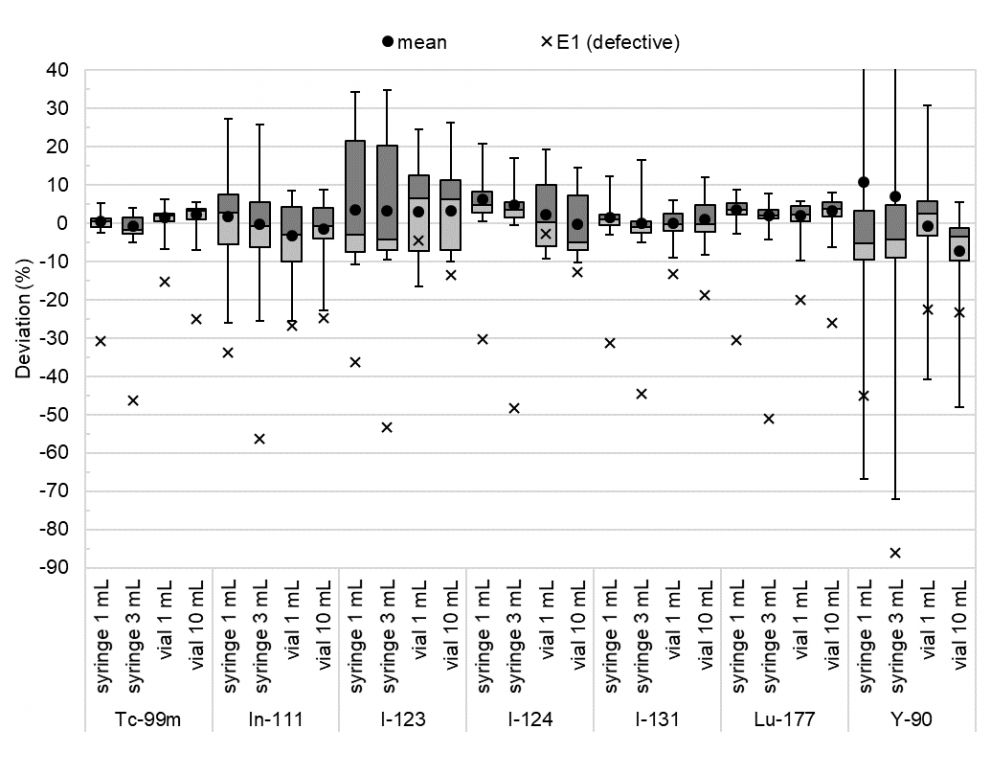
Theragnostics is a treatment strategy that combines therapeutics with diagnostics. It molecularly targets and kills cancer cells whilst sparing healthy tissue.
Matched pairs of radionuclides are being assembled; one nuclide for imaging the cancer in the patient, the other for destroying the cancer cells. The basic safety standard requires that the radiation dose delivered to the patient is well quantified.
The JRC and the SCK have provided reference values for the first international proficiency test of hospital calibrations of the activity of theragnostic radionuclide pairs. In total, 32 calibrators were tested from 8 participating hospitals in the Netherlands, Belgium, and Germany. The accuracy was evaluated for 5 clinically-relevant theragnostic pairs: 131I/123I, 131I/124I, 177Lu/111In, 90Y/99mTc and 90Y/111In. The study shows that substantial over- or under-estimation of therapeutic patient doses are likely to occur in a theragnostic setting.
These findings underline the importance of thorough validation of radionuclide calibrator systems for each clinically-relevant radionuclide and sample geometry. A unified, international standard for calibrating medical radionuclide calibrators may be useful to give the necessary boost for achieving quantitative accuracy in the daily practice of nuclear medicine for the 21st Century.
More information can be found in an article on the European Journal of Nuclear Medicine and Molecular Imaging – Physics.
The work has also been presented at the Virtual Conference of the European Association of Nuclear Medicine (EANM) October 22 – 30, 2020 found on springer.com
Details
- Publication date
- 12 November 2020
